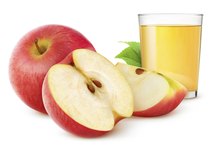What does fact checked mean?
At Healthfully, we strive to deliver objective content that is accurate and up-to-date. Our team periodically reviews articles in order to ensure content quality. The sources cited below consist of evidence from peer-reviewed journals, prominent medical organizations, academic associations, and government data.
- Nutrients: Bioavailability of Coffee Chlorogenic Acids and Green Tea Flavan-3-ols
- Nutrients: Bioavailability of Coffee Chlorogenic Acids and Green Tea Flavan-3-ols
- Evidence-Based Complementary and Alternative Medicine: Roles of Chlorogenic Acid on Regulating Glucose and Lipids Metabolism: A Review
- Evidence-Based Complementary and Alternative Medicine: Roles of Chlorogenic Acid on Regulating Glucose and Lipids Metabolism: A Review
- Diabetes, Metabolic Syndrome and Obesity: Targets and Therapy: Randomized, Double-Blind, Placebo-Controlled, Linear Dose, Crossover Study to Evaluate the Efficacy and Safety of a Green Coffee Bean Extract in Overweight Subjects
- Diabetes, Metabolic Syndrome and Obesity: Targets and Therapy: Randomized, Double-Blind, Placebo-Controlled, Linear Dose, Crossover Study to Evaluate the Efficacy and Safety of a Green Coffee Bean Extract in Overweight Subjects
- Journal of Agricultural and Food Chemistry: Chlorogenic Acids and Lactones in Regular and Water-Decaffeinated Arabica Coffees
- Journal of Agricultural and Food Chemistry: Chlorogenic Acids and Lactones in Regular and Water-Decaffeinated Arabica Coffees
The information contained on this site is for informational purposes only, and should not be used as a substitute for the advice of a professional health care provider. Please check with the appropriate physician regarding health questions and concerns. Although we strive to deliver accurate and up-to-date information, no guarantee to that effect is made.
Coffee beans contain many acids, yet they create a beverage less acidic than soda. On the pH scale, where zero is highly acidic and seven is neutral, coffee rates 4.5 to 6 compared to soda that ranks around 2 to 3. The impact of acids on coffee's flavor depends on the type of bean, the grind and the brewing time. The most abundant acid in coffee -- chlorogenic acid -- is an antioxidant that may provide health benefits.
Types of Acids
More than 30 different types of acids are included on the list of acids in coffee provided by CoffeeResearch.org 2. Some of the acids in coffee are better known for their presence in other foods. For example, citric acid and malic acid are found in fruits and vegetables. Vinegar's tartness comes from another acid in coffee: acetic acid. Coffee also contains lactic acid, which is found in fermented products such as yogurt and is used to add acidity to soft drinks. Many of the acids in coffee are known only by their more complex chemical names, including a group collectively called chlorogenic acid.
- More than 30 different types of acids are included on the list of acids in coffee provided by CoffeeResearch.org 2.
- Coffee also contains lactic acid, which is found in fermented products such as yogurt and is used to add acidity to soft drinks.
Benefits of Chlorogenic Acid
Tannins and Acids in Coffee
Learn More
Chlorogenic acid may lower your risk of developing diabetes through its influence on glucose metabolism, according to a review in the August 2013 issue of “Evidence-Based Complementary and Alternative Medicine.” The same review also reported that chlorogenic acid in green coffee beans may help with weight loss 4. Some chlorogenic acid is lost during roasting, but a serving of coffee still retains 20 to 675 milligrams, depending on the type of coffee. For comparison, 60 milligrams of chlorogenic acid equals 185 milligrams of green coffee bean extract because only about 30 percent of the extract consists of chlorogenic acid.
Impact of Grinding and Brewing Time
You can change the amount of acid in your coffee by adjusting the grind and brewing time. When beans are coarsely ground, they contain a smaller amount of most acids, but the difference is especially notable for chlorogenic acids. You’ll get three times more chlorogenic acid when you use an extra-fine grind of coffee. The levels of most acids go up when brewing time increases from one to five minutes, but then acidity drops again if the coffee is brewed for 14 minutes. Even though they taste stronger, darker roasts have less acid.
- You can change the amount of acid in your coffee by adjusting the grind and brewing time.
- The levels of most acids go up when brewing time increases from one to five minutes, but then acidity drops again if the coffee is brewed for 14 minutes.
Acidity of Different Types of Coffee
Acids Found in Apple Juice
Learn More
The two types of beans commonly cultivated for commercial use are arabica and robusta. Arabica beans contain double the sugar, half the caffeine and about 2 percent less chlorogenic acid than robusta beans. In spite of having less acid, the sugar in arabica beans decomposes during roasting, creating a flavor that may seem more acidic. When researchers tested coffee made using decaffeinated and regular Arabica beans, they found that decaffeinated coffee had 3 to 9 percent less chlorogenic acid than regular coffee, according to the January 2006 issue of the “Journal of Agricultural and Food Chemistry. 7”
- The two types of beans commonly cultivated for commercial use are arabica and robusta.
- When researchers tested coffee made using decaffeinated and regular Arabica beans, they found that decaffeinated coffee had 3 to 9 percent less chlorogenic acid than regular coffee, according to the January 2006 issue of the “Journal of Agricultural and Food Chemistry.
Related Articles
References
- CoffeeChemistry.com: Coffee Acidity and Processing
- CoffeeResearch.org: Coffee Chemistry: Coffee Acidity
- Nutrients: Bioavailability of Coffee Chlorogenic Acids and Green Tea Flavan-3-ols
- Evidence-Based Complementary and Alternative Medicine: Roles of Chlorogenic Acid on Regulating Glucose and Lipids Metabolism: A Review
- Diabetes, Metabolic Syndrome and Obesity: Targets and Therapy: Randomized, Double-Blind, Placebo-Controlled, Linear Dose, Crossover Study to Evaluate the Efficacy and Safety of a Green Coffee Bean Extract in Overweight Subjects
- CoffeeChemistry.com: Differences: Arabica and Robusta Coffee
- Journal of Agricultural and Food Chemistry: Chlorogenic Acids and Lactones in Regular and Water-Decaffeinated Arabica Coffees
- New York University Langone Medical Center: Green Coffee Bean Extract
- Poole R, Kennedy OJ, Roderick P, Fallowfield JA, Hayes PC, Parkes J. Coffee consumption and health: umbrella review of meta-analyses of multiple health outcomes. BMJ. 2017;359:j5024. doi:10.1136/bmj.j5024
- Choe JW, Joo MK, Kim HJ, et al. Foods inducing typical gastroesophageal reflux disease symptoms in Korea. J Neurogastroenterol Motil. 2017;23(3):363‐369. doi:10.5056/jnm16122
- Rubach M, Lang R, Bytof G, et al. A dark brown roast coffee blend is less effective at stimulating gastric acid secretion in healthy volunteers compared to a medium roast market blend. Mol Nutr Food Res. 2014;58(6):1370-3. doi:10.1002/mnfr.201300890
- Liu J, Wang Q, Zhang H, Yu D, Jin S, Ren F. Interaction of chlorogenic acid with milk proteins analyzed by spectroscopic and modeling methods. Spectroscopy Letters. 2015;49(1):44-50. doi:10.1080/00387010.2015.1066826.
- Liszt KI, Ley JP, Lieder B, et al. Caffeine induces gastric acid secretion via bitter taste signaling in gastric parietal cells. Proc Natl Acad Sci U S A. 2017;114(30):E6260–E6269. doi:10.1073/pnas.1703728114
Writer Bio
Sandi Busch received a Bachelor of Arts in psychology, then pursued training in nursing and nutrition. She taught families to plan and prepare special diets, worked as a therapeutic support specialist, and now writes about her favorite topics – nutrition, food, families and parenting – for hospitals and trade magazines.









